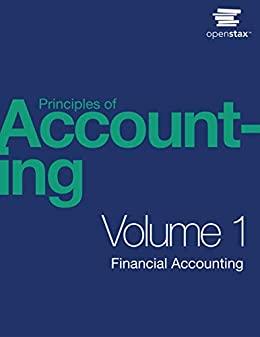Question
MyBiz Inc. has been your business for the past several years. You have put together your cash flow statements for the past 3 years to
MyBiz Inc. has been your business for the past several years. You have put together your cash flow statements for the past 3 years to get a better idea of how your business is managing cash flow.
| Year ending December 31 | 2021 | 2020 | 2019 |
| Cash flow from operations | -56,000 | -30,000 | 40,000 |
| Cash flow from investing | 20,000 | 15,000 | -5,000 |
| Cash flow from financing | -10,000 | 20,000 | 25,000 |
| Net change in cash | -46,000 | 5,000 | 60,000 |
| Cash, beginning of year | 197,000 | 192,000 | 132,000 |
| Cash, end of year | 151,000 | 197,000 | 192,000 |
| Profit for the year | (55,000) | (25,000) | 35,000 |
The next five questions relate to the cash flow statements below. The rest of the questions in this section of the exam are independent.
Question 29 (1 point)
Which section of the cash flow statement is considered the most important? Why?
Question 29 options:
|
|
| ||
|
|
| ||
|
|
| ||
|
|
| ||
|
|
|
Question 30 (1 point)
Which life-cycle stage was the business most likely in, back in 2019?
Question 30 options:
|
|
| ||
|
|
| ||
|
|
| ||
|
|
| ||
|
|
|
Question 31 (1 point)
Which life-cycle stage is the business most likely in by 2021?
Question 31 options:
|
|
| ||
|
|
| ||
|
|
| ||
|
|
| ||
|
|
|
Question 32 (1 point)
Cash flow from investing activities has gone from negative to positive over the years. Which of the following transactions can cause investing cash flow to increase?
Question 32 options:
|
|
| ||
|
|
| ||
|
|
| ||
|
|
| ||
|
|
| ||
|
|
|
Question 33 (1 point)
Cash flow from financing activities has gone from positive to negative over the years. Which of the following transactions can cause financing cash flow to decrease?
Question 33 options:
|
|
| ||
|
|
| ||
|
|
| ||
|
|
| ||
|
|
|
Question 34 (1 point)
Which type of financial ratio can be calculated from both income statement and balance sheet figures?
Question 34 options:
|
|
| ||
|
|
| ||
|
|
| ||
|
|
| ||
|
|
|
Question 35 (1 point)
Which type of financial ratio tells you how well a company can cover its long-term liabilities?
Question 35 options:
|
|
| ||
|
|
| ||
|
|
| ||
|
|
| ||
|
|
|
Question 36 (1 point)
Which type of financial ratio tells you how well a company can cover its current liabilities?
Question 36 options:
|
|
| ||
|
|
| ||
|
|
| ||
|
|
| ||
|
|
|
Question 37 (1 point)
Which of the following is a liquidity ratio?
Question 37 options:
|
|
| ||
|
|
| ||
|
|
| ||
|
|
| ||
|
|
|
Question 38 (1 point)
In a horizontal analysis of an income statement, what is the correct formula to calculate the percentages?
Question 38 options:
|
|
| ||
|
|
| ||
|
|
| ||
|
|
| ||
|
|
|
Question 39 (1 point)
In a vertical analysis of a balance sheet, what is the correct formula to calculate the percentages?
Question 39 options:
|
|
| ||
|
|
| ||
|
|
| ||
|
|
| ||
|
|
|
Question 40 (1 point)
A vertical analysis of an income statement tells you
Question 40 options:
|
|
| ||
|
|
| ||
|
|
| ||
|
|
| ||
|
|
|
Question 41 (1 point)
A horizontal analysis of a balance sheet tells you
Question 41 options:
|
|
| ||
|
|
| ||
|
|
| ||
|
|
| ||
|
|
|
Step by Step Solution
There are 3 Steps involved in it
Step: 1

Get Instant Access to Expert-Tailored Solutions
See step-by-step solutions with expert insights and AI powered tools for academic success
Step: 2

Step: 3

Ace Your Homework with AI
Get the answers you need in no time with our AI-driven, step-by-step assistance
Get Started


